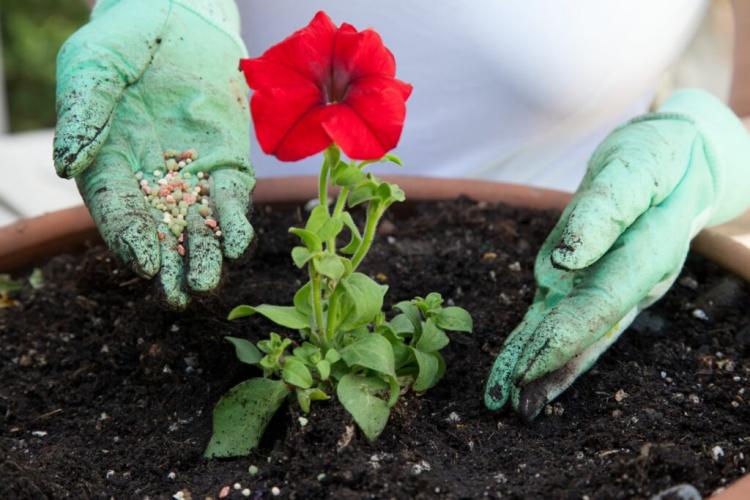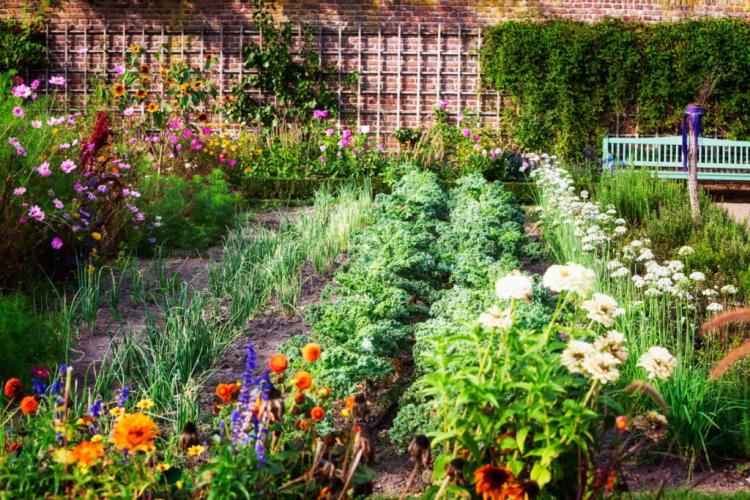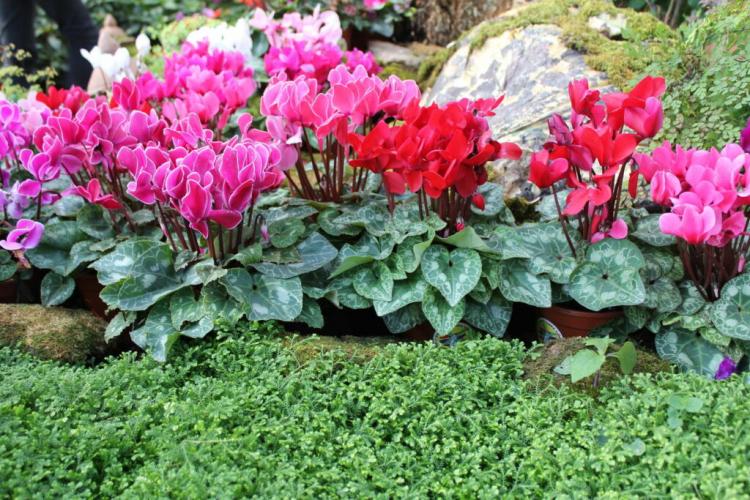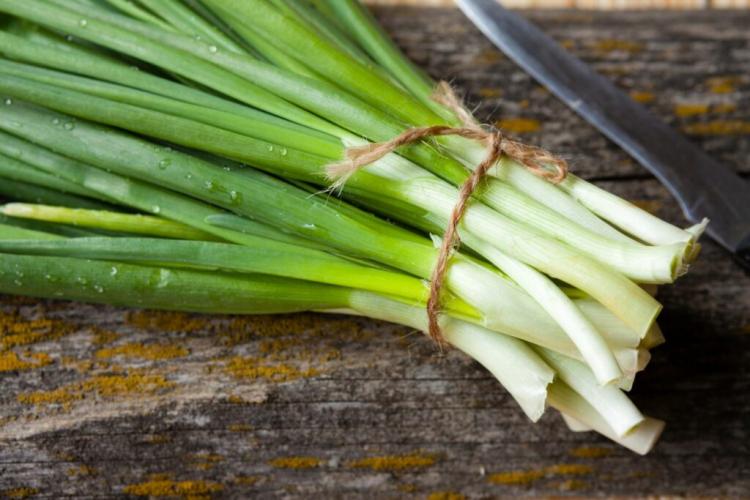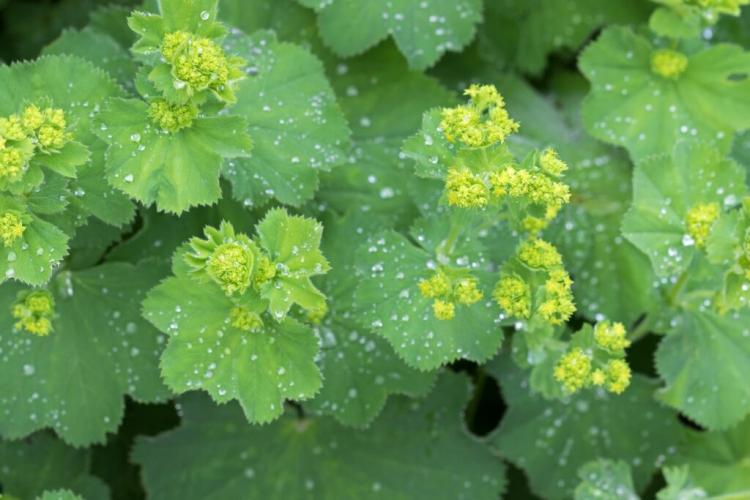Raised bed in winter: planting and making it winterproof
In summer the raised bed supplies fresh vegetables and herbs. But how can you use your raised bed in winter? Here you can find out which plants can be overwintered in the raised bed and how you can winterize your raised bed.
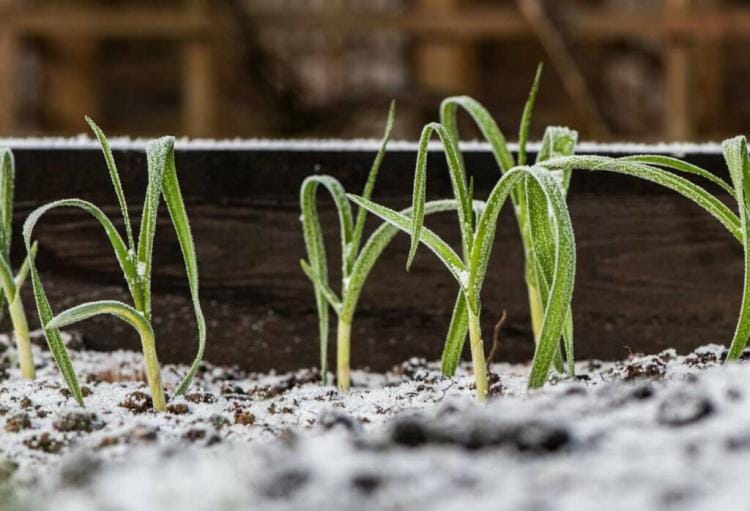
The winter hedge onion is one of many hardy vegetables [Photo: Giedra Bartas / Shutterstock.com]
The popularity of raised beds as ornamental or vegetable beds has been unbroken for years. They can now be found in many gardens. In summer, raised beds can provide large yields of vegetables and herbs, and ornamental flowers also thrive. In winter, on the other hand, the final harvest work as well as care and preparation for the coming year are the main tasks. A few plants continue to grow slowly even in winter, and sowing in this cold time conveniently ensures that the spring vegetables are early. We explain how to manage the raised bed in winter, prepare it correctly and protect it from the winter cold. Because there are several ways to ensure that the raised bed does not lie fallow in winter, but that it accommodates some residents.
Hibernate perennial plants in the raised bed
Table of Contents
Perennial plants can simply be left in the raised bed over the winter and overwintered on the spot. Various perennials survive the winter unscathed in the raised bed. And herbs don't mind being overwintered in the raised bed either. Some of them can even be harvested during the cold season. Herbs such as sage, thyme and rosemary, which keep their leaves even in winter, can then add flavor to the kitchen. However, since nothing grows back in winter, harvesting should not be too rigorous. It is also advisable to only harvest individual leaves, as cutting off entire shoots would create entry portals for the frost.
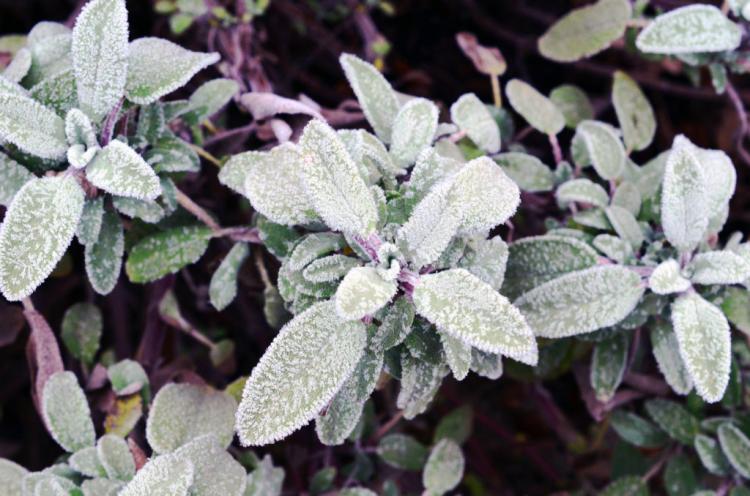
Herbs like sage can be overwintered in the raised bed [Photo: Yato Kenshin / Shutterstock.com]
In general, when hibernating plants, it is important to pay attention to how much cold they can tolerate. If necessary, additional protection may be required to get them alive through the winter. You can read more about this below, where we describe a protective cover for the raised bed.
Winter vegetables in the raised bed
Even in raised beds with winter protection, (almost) nothing can be sown during the cold season in order to grow over the winter: all vegetable plants simply lack light and warmth in the cold season. But there are many vegetables that can be sown in summer or early autumn and then simply left on the bed over the winter. If the sun is shining for a few days, these winter vegetables will continue to grow very slowly, and they will stay fresh and take up less space than if they were harvested and stored.
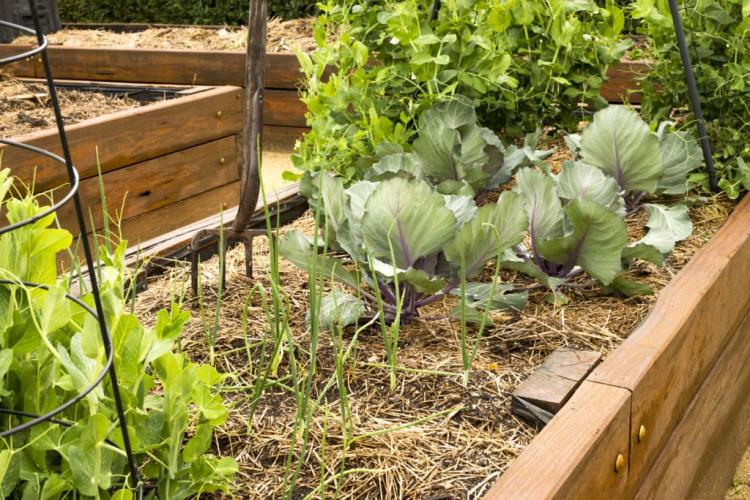
Winter vegetables can be grown very well in raised beds [Photo: Anne Greenwood / Shutterstock.com]
Tip: The frost-tolerant winter vegetables are usually leafy vegetables. When harvesting, you should note the following: If the plant is to sprout again after harvest, the harvest may only take place on frost-free days. This is the only way to ensure that the plant is not damaged by temperatures that are too low and that it sprouts again so that it can be harvested again after a few weeks.
- Lamb's lettuce : In some places the lamb's lettuce ( Valerianella ) is already referred to as winter salad – even frosty temperatures cannot harm it. Cold even improves its taste. During the cold season, however, it takes a long time to grow, which is why it makes sense to prefer the lamb's lettuce in the house. If it is sown in September or October, the lamb's lettuce can be harvested from November to December. For later sowing, you should pay particular attention to the use of a frost-resistant variety such as 'Vit' or 'Verte de Cambrai' – depending on the weather conditions, these can be harvested without any problems until March of the following year. A special feature of the lamb's lettuce is its ability to regenerate: If you cut off only the upper leaves and leave the roots and base of the plant undamaged, the plant regenerates itself and can easily be harvested again in a few weeks.
- Endive : Endive ( Cichoriumendivia ) is, like lamb's lettuce, a leafy vegetable that has a certain frost tolerance. At temperatures down to -5 ° C, endives are not damaged, which is why they are also suitable for winter planting in raised beds. If the endive is sown by the end of August, it can still be harvested in November and December without any problems. The entire head of lettuce is cut off just above the leaf rosette – so the individual endive plants can be harvested one by one.
- Kale : The kale ( Brassica oleracea var . Sabellica ) is a famous selection of cabbage and is very closely related to Brussels sprouts, kohlrabi and co. Depending on the region, it is also known as brown cabbage. In order to be able to enjoy the characteristic aroma, the kale is only harvested after the first frosts. Temperatures down to -10 ° C pose no threat to him. This winter cabbage must be grown as early as spring in order to be able to enjoy it during the cold season, as it takes up to 6 months from its planting to maturity. The main kale season started between November and January: During this time, kale can be harvested without any problems. If you want to enjoy a lot of kale despite having a small raised bed, you can use an old trick: If you carefully peel off the individual leaves during harvest and leave the stalk, the kale can sprout again in mild weather and then be harvested again.
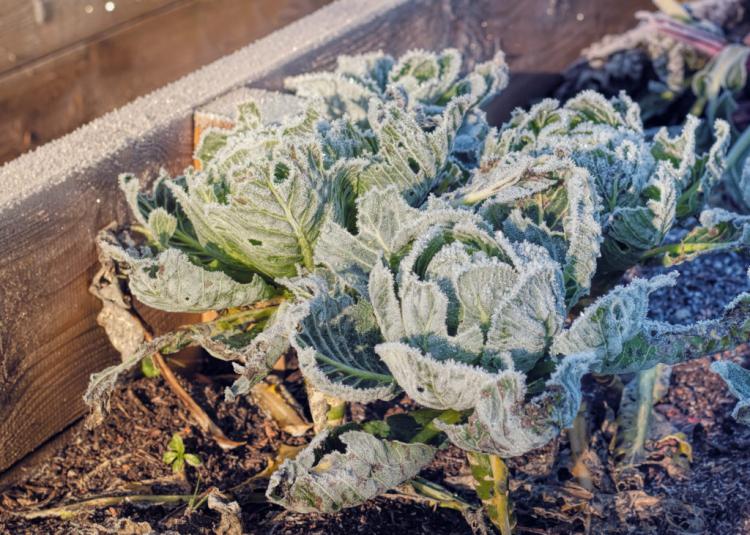
Cabbage is a classic winter vegetable [Photo: jgolby / Shutterstock.com]
- Parsnips : The gardening year for parsnips ( Pastinaca sativa ) begins as early as May with the sowing. The harvest can begin when the leaves fall in autumn. However, you can harvest the root vegetables throughout the winter as needed and use them fresh: Since the delicious roots are protected from frost by the earth, they can stay in the bed without any problems and only be harvested when they are needed.
- Winter spinach: Spinach ( Spinacia oleracea ) is one of those plants that should definitely not be missing in the winter garden. For winter cultivation in the raised bed, the spinach is sown directly in the raised bed between mid-September and mid-October. It is advisable to use particularly frost-hardy and fast-growing spinach varieties such as 'Matador' or 'Redbor'. The plants will be ready for harvest from mid / late November. If you only carefully harvest individual leaves from the spinach, it can sprout again at mild temperatures and can be enjoyed several times. The last harvest of winter spinach typically takes place in early April.
- Winter hedge onion : The name winter hedge onion is actually just another name for the well-known spring onion ( Allium fistulosum ). The leek plant is hardy and can be sown in early autumn and then harvested throughout the winter. But be careful: if you really want to enjoy the perennial winter hedge onion, you don't pull the entire plant including the onion out of the ground, but just cut off the green, similar to chives.

The spring onion is a tasty component of the winter raised bed [Photo: High Mountain / Shutterstock.com]
- Postelein : A real insider tip for the winter in the raised bed is Postelein ( Claytonia perfoliata ), also known as Cuban spinach or winter purslane. Postelein can be sown directly in the bed from September to October, in a raised bed with a cold frame attachment even from September to March, because they germinate at a temperature of 4 – 12 ° C. When fully grown, the Postelein is incredibly robust and frost-resistant, so that it can withstand temperatures as low as -20 ° C. If the leaves are not cut too low, the postage can easily be harvested several times. The fleshy leaves are wonderful as a fresh salad, but can also be prepared like spinach.
Winterize the raised bed
Of course, there is also the question of whether you should prepare the raised bed yourself for a harsh winter in order to protect the material. This is of course not a disadvantage – and with just a few simple steps you can even encourage the growth of perennial plants and winter vegetables in the raised bed with such precautions.
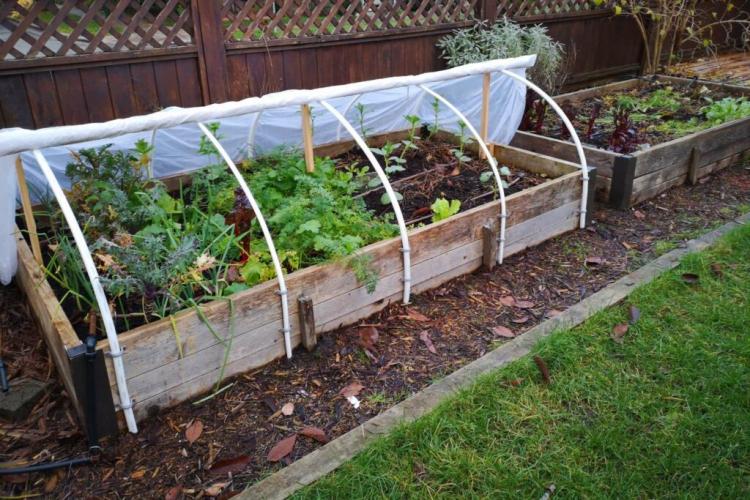
It makes sense to think about raised beds in winter [Photo: Trevor Clark / Shutterstock.com]
Wrap the raised bed in bubble wrap or garden fleece
As you do with potted plants, the raised bed can also be wrapped in bubble wrap or garden fleece. The additional protection keeps the cold out. The frosty temperatures cannot penetrate the root space of the plants so quickly. In extreme minus temperatures, this is a protection and on warmer winter days, the growth may even be promoted somewhat by the measure.
Cover the raised bed in winter
A natural way of protecting the plants in the raised bed is to mulch with garden waste such as leaves, fir branches or brushwood. This has the advantage that the soil and plants are protected in winter and insulated against the cold.
However, many gardening enthusiasts are particularly concerned about the rainy weather in winter. The question quickly arises: Do I have to protect my raised bed from rain in winter? If the raised bed is not sufficiently well drained, i.e. rainwater cannot drain off well, the answer is a resounding “Yes!”. But even permeable beds can benefit from a proper roof as protection from rain and cold wind: If only partially hardy plants such as some types of vegetables and lettuce are to be grown in winter, a cover serves to extend the harvest period. Because the bed stays warm longer with the protection in autumn and warms up faster in spring.
A cold frame attachment for the raised bed is best suited as rain protection, as this allows enough light to the plants, can be ventilated if necessary and reliably keeps the rain off. A simple foil tunnel that is stretched over the raised bed is also practical. Self-made covers made of double wall sheets or lattice film for greenhouse construction are an option for all hobbyists with a little manual skill. The costs for the materials are often low compared to purchasing finished structures.
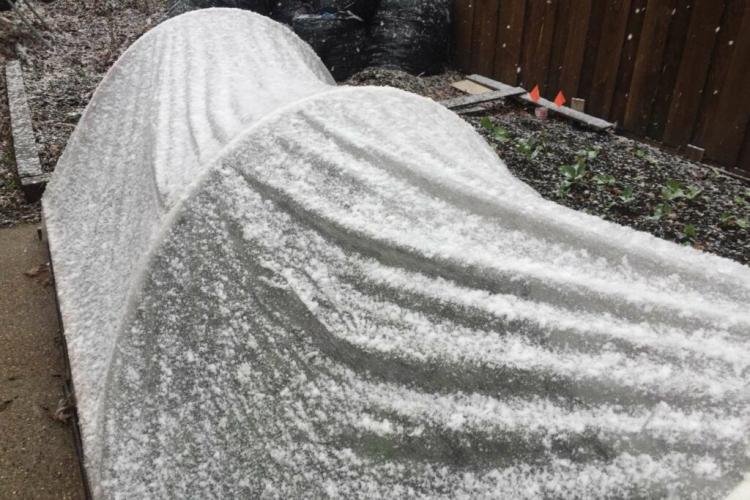
Covering the raised bed in winter keeps the soil warm and improves growth [Photo: K Nguyen Studio / Shutterstock.com]
Regardless of which construction method you choose, you must always make sure that the plants do not hit the cover, because where they come into contact with condensation water, it can quickly start to mold. In addition, when growing vegetables, care should be taken to ensure that regular ventilation is possible in order to avoid excessive humidity.
Tip: Mobile raised beds can be placed in a sheltered place in winter to improve the growing conditions. It is even possible to park it in a frost-free, light outer house, a carport that is closed on one side or in the winter garden.
Prepare the raised bed for the next season
If you think ahead when looking after your raised bed, you can save yourself a lot of work in spring. If the raised bed is completely cleared in autumn and there is no winter greenery, the winter can be used wonderfully to prepare for the new season.
Mulching and new filling
Especially if the vegetable patch has sagged badly due to rotting processes, it can be worth caring for in autumn and winter. To do this, all plant remains (including roots and weeds) are removed from the raised bed and this is filled with compostable material and ripe compost. During the first frost, the raised bed is covered with mulch material (e.g. spruce and fir branches). The first rotting of the material begins over the winter. Around the beginning of April, when the temperatures get warmer again, the raised bed is freed from its mulch layer and filled with a new layer of nutrient-rich potting soil, such as our peat-free Plantura organic universal soil. Prepared in this way, the first plants can soon move into the raised bed and look forward to the replenished nutrient supply.
Green manure and pre-sowing
However, if you don't want your raised bed empty in winter, you don't have to do without the care of your raised bed. Green manuring in autumn is ideal to do something good for your stressed raised bed. Before the first frosts sweep across the country, it is time to sow green manure plants such as winter vetch, incarnate clover, Italian ryegrass or a mixture of hardy green manure plants. They not only look decorative in the raised bed, but also improve the structure of the soil and protect the soil from the weather. In addition, these plants loosen up the substrate with their roots and fix atmospheric nitrogen, which later serves as fertilizer for the vegetable plants.
Parallel to or instead of the green manure, it is possible to sow the first seeds in the raised bed in late autumn and winter, which should germinate in spring: early radishes, carrots, lettuce and lettuce and herbs such as chervil, borage or parsley can also be used instead of early March be sown as early as October or November. Covered with a layer of mulch or protected by green manure, they survive the winter there and, with rising temperatures, often germinate much earlier in spring than plants sown in March.
Would you like to grow herbs in your raised bed in addition to vegetables? We show how to successfully plant a raised herb bed, taking into account the individual needs of the individual plants.

